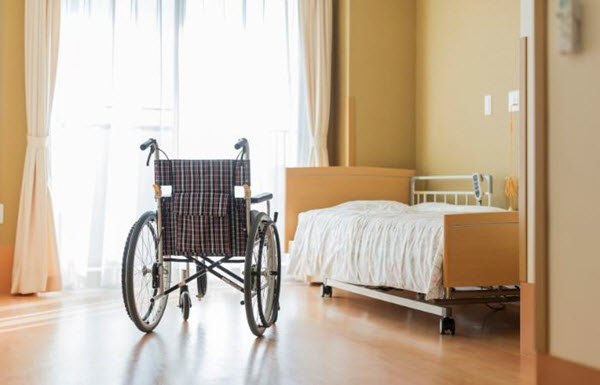Moral Distress in Healthcare – NurseBuff
I wrote much of my novel, South Eight, while taking a break after fourteen years in acute care, the first four as a bedside PCU nurse, the next ten as a hospitalist NP. I thought I was burned out, to use the classic phrase, for all the classic reasons — workload, documentation demands, night shifts, the intrusions of technology on so many levels.
But as I wrote and reflected, I became aware of a more persistent underlying concern: moral distress. Moral distress over what I was actually accomplishing for my patients, specifically the elderly and chronically ill who formed the vast majority of my daily census. I had begun to feel that by “successfully” treating the exacerbations or flares of their chronic and progressive conditions, I was often actually prolonging suffering and ensuring an ever-worsening quality of life. I saw the famous “stepwise downward progression” in my patients month after month, year after year.
Those are strong words, “prolonging suffering.” And it’s a truly horrific notion that by deploying our training and experience and compassion we might actually make our patients’ lives worse. Unfortunately, however, the long list of truly extraordinary advances in medical science over the past 75 years — antibiotics, ventilatory devices, pacemakers, high resolution imaging, advanced laboratory tools and medications of all kinds — have by and large not cured the broad range of chronic diseases that affect the ill elderly.
We can treat aspiration pneumonia in our dementia patients, for example, or the exacerbations of COPD, or acute overload in advanced heart failure, or fractures in the osteoporotic, or falls in Parkinson’s, and so on, but we can’t cure the underlying illnesses. So, the acute episodes of such conditions that would have ended patients’ lives in the not-so-distant past, no longer do.
Instead, now, as these patients age their conditions progress. And if you’ve worked in hospitals with the aging and chronically ill, or in a rehab and nursing home, as I currently do, you know how the progression of those conditions affects quality of life. We can argue that it’s not our place to make judgements about our patients’ quality of life, but we can’t pretend we don’t see the decline, or feel how our work in prolonging life may also worsen it.

We also know that the same advances in medicine that prolong our patients lives also result in many of them living out and ending their days not at home, among friends or family, surrounded by the reminders of their lived lives, but in hospitals and nursing homes. A commonly cited and startling statistic (from Stanford School of Medicine) notes that while 80% of patients express a desire to die at home, 80% actually die in nursing homes and hospitals.

When confronted with the possibility of death, two questions can be asked.
The first, the one we usually ask, is “When?” And candidly, as a hospitalist admitting and treating the acutely ill elderly, my answer to that question almost always was “Not now.” Not on this shift, this admission, not on my watch.
But I would argue that the more important question, especially for chronically ill elderly, is not “When?” but “How?” Do I live out my days shuttling in and out of institutions? Or am I at home surrounded by the people and things I know and love? Do I wring every last moment out of my existence, or do I exist fully in however many moments a decent quality life affords me?
I imagine that most of us would choose home and quality of life over sheer existence. I believe most of our patients would make the same choice if they could. Sadly, with the way healthcare is currently structured, most never really have that option.
So, what’s to be done? To start, I would suggest change in three areas:
- Recognize that while the declines of dementia, COPD, heart failure, and so on have ICD10 codes, and so are categorized as “diseases,” these and others, even cancer, are also conditions of aging. As everything in nature that lives will suffer biological declines with age, so do we humans. If we can see our aging process not as a disease or diagnosis code, but as a part of life, we may more easily come to terms with it, and find acceptance rather than engaging in a never-ending battle that nature itself does not intend us to win.
- In line with this, start the palliative care process earlier, soon after receiving a serious diagnosis of the kind mentioned above. Multiple studies have shown the benefit of early palliative care on quality of life, emotional state, family wellbeing, and even survival. Palliative care is in large part about what matters to the patient in the broadest sense, not just the treatment demands of the present moment.
- Rethink advance directives: In most states we ask patients to consider the possibility of incurable or irreversible conditions, and to tell us whether they want CPR, intubation, artificial nutrition, antibiotics. Every one of those terms is technical and specific to us in healthcare, and even then may be subject to uncertainty and doubt. Questions about intubation and hydration and even antibiotics in advanced illness can be complicated for professionals. Rather than asking about amorphous situations such as “incurable or irrevocable” medical conditions, how much better to ask patients about the things that matter to them: whether they can recognize loved ones, eat the foods they love, walk out into their gardens, read a book — imagine your own list — and if they can’t do those things offer a choice that is readily understandable: comfort measures only. And then let clinicians guide the decision about what will be compatible with comfort.
Conversations with colleagues have convinced me that many others privately experience the same moral distress that became apparent to me as I wrote South Eight. Ending the silence around it will benefit patients and providers alike.
Author Bio:
 Larry Atlas is a former Drill Sergeant who served in the Army. After his service, he attended Bennington College, earning both bachelor’s and master’s degrees before declining admission to medical school —and moving to New York to begin a successful career as an actor, playwright, and screenwriter. Among his produced plays are Total Abandon and the award-winning Yield of the Long Bond which premiered at the Matrix Theatre in Los Angeles. He worked on multiple studio film projects including Sleepless in Seattle. He conceived and implemented the first nationwide online actors’ casting service, and then later co-invented and patented the first navigable nonlinear video architecture. In midlife, on impulse, he went to nursing school, then worked for four years as an acute care nurse while earning a master’s degree as a nurse practitioner at SUNY Stony Brook. He worked for a decade as a hospitalist NP and now practices at a subacute rehab. He has taught at Hunter, Bennington, and Vassar colleges, and is a former captain of the skydiving team Spaced Rangers. Larry lives in upstate New York with actor-turned-therapist Ann Matthews, and their dog Ruby.
Larry Atlas is a former Drill Sergeant who served in the Army. After his service, he attended Bennington College, earning both bachelor’s and master’s degrees before declining admission to medical school —and moving to New York to begin a successful career as an actor, playwright, and screenwriter. Among his produced plays are Total Abandon and the award-winning Yield of the Long Bond which premiered at the Matrix Theatre in Los Angeles. He worked on multiple studio film projects including Sleepless in Seattle. He conceived and implemented the first nationwide online actors’ casting service, and then later co-invented and patented the first navigable nonlinear video architecture. In midlife, on impulse, he went to nursing school, then worked for four years as an acute care nurse while earning a master’s degree as a nurse practitioner at SUNY Stony Brook. He worked for a decade as a hospitalist NP and now practices at a subacute rehab. He has taught at Hunter, Bennington, and Vassar colleges, and is a former captain of the skydiving team Spaced Rangers. Larry lives in upstate New York with actor-turned-therapist Ann Matthews, and their dog Ruby.








